Postcards from Havana
No, not overtly political these works—no satiric portraits of Fidel; no peons carrying enormous, back-breaking baskets of cotton. But what you do sense is absence. If, for instance, you were asked to name the dominant color of the works, your eyes would sweep the room, and you would declare: brown. Why? Because the basic working-class paper many of the artists use, or have to use, is brown. There are few strong illuminating reds, yellows or blues in this art, probably because there is no money for an array of acrylics or for watercolors. It’s interesting to compare these artists’ books with those of the Cuban/American artist Lydia Rubio [FB&C July/August 2007], who was born in Cuba, and who for many years has been living in the U.S. It seems to me that her work is simply more colorful, and I wonder if that is not just simply a case of her artistic choices, but of the materials being available to her.
There are some exceptions. Among my favorite works were two gorgeous untitled prints by Ibrahim Miranda, swirling gold abstractions that resemble flying sea creatures and are suffused with color, a luxurious standout from the rest of the show. I also admired Selección, by Alfredo Zaldivar, a series of Botticelli-like female figures drawn in delicate black ink. These works, in their elegance and lushness, sweetly relieve the determined ingenuity of the artists’ books that make up the majority of the show. On the other hand, ingenuity can reach very satisfying heights in, say, a delightful cache of paper CDs by Yoan and Iván Capote, made from a paperback edition of a Chinese book on the history of Cuba. And it’s almost impossible not to like Danilo Moreno’s Soldado, a largish light bulb made entirely of copper-colored Cuban coins. It’s witty and delightful.
Some of the texts in the works are, curiously, in English. “The Mirror Poems” by Sandra Ramos, “mixes excerpts from Lewis Carroll’s Jabberwocky and John Tenniel’s images with her own, on pages facing foldout mirrors,” according to the handout. So the argument can be made that the artist does not want to distort the text by translating it into Spanish. But, then, who is the audience? Cubans? Us?
The Cuban genius for scavenging and recycling is well known to the outside world from those 1950s American cars the Cubans somehow keep running beautifully and made into a kind of folk art. That talent is apparent here, too. But an art of improvisation is not unfamiliar to those who know folk art in, say, the rural South, or Haiti, where portions of tin roofs and signage are used to make art. There is a certain ecological satisfaction in viewing these works, in addition to the aesthetic pleasures, akin to the satisfaction we might get from using old milk cartons to germinate seeds. Yes, the show is political, but what it says to at least one visitor is that people will make art, people must make art, however they can.








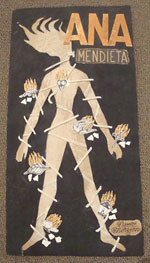
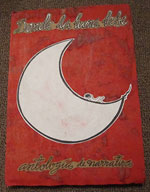
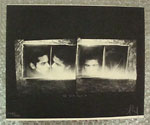
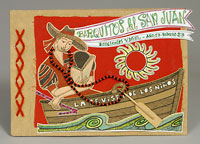
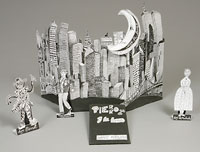
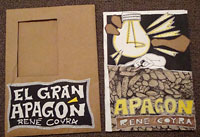
 Richard Goodman is the author of
Richard Goodman is the author of